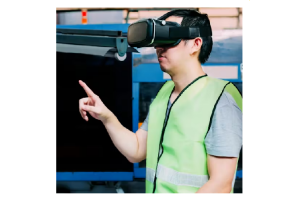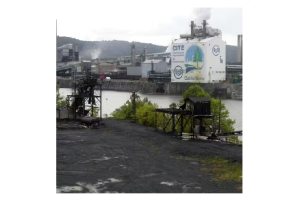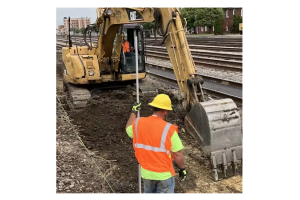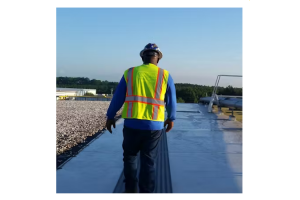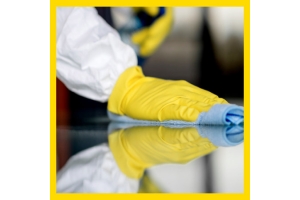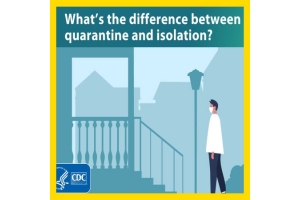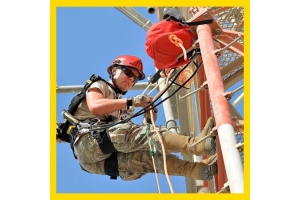Currency
-
August 31, 2021
Summary of Recent Changes
● Updated information for fully vaccinated people given new evidence on the B.1.617.2 (Delta) variant currently circulating in the United States.
● Added a recommendation for fully vaccinated people to wear a mask in public indoor settings in areas of substantial or high transmission.
● Added information that fully vaccinated people might choose to wear a mask regardless of the level of transmission, particularly if they are immunocompromised or at increased risk for severe disease from COVID-19, or if they have someone in their household who is immunocompromised, at increased risk of severe disease or not fully vaccinated.
● Added a recommendation for fully vaccinated people who have come into close contact with someone with suspected or confirmed COVID-19 to be tested 3-5 days after exposure, and to wear a mask in public indoor settings for 14 days or until they receive a negative test result.
● CDC recommends universal indoor -
August 31, 2021Safety io GmBH (a software subsidiary of MSA – The Safety Company) has recently achieved ISO/IEC 27001:2013 certification for its information security management practices. This comes after an extensive independent external audit by Bureau Veritas, an accredited independent body.
Protecting workers when the seconds count
Safety io protects workers and worksites in the industrial and fire service sectors by relentlessly creating, refining, and expanding software tools that improve operations and outcomes.
Safety io offers two safety platforms – the Grid, for industrial customers, and the FireGrid, for fire service customers – and two independent Grid services: Fleet Manager, which helps ensure customers’ detectors and colleagues are ready for work, and Live Monitor, which provides customers with the information they need to take action when seconds count. These platforms are supported by web and mobile application experiences.
-
August 31, 2021This month, we saw a few trends in our website metrics.
Stories about how to deal with COVID-19 continue to capture clicks. It’s not hard to understand why: Keeping up with the latest developments in a persisting pandemic is no easy feat.
The recent surge in COVID-19 cases and hospitalizations prompted the Centers for Disease Control and Prevention to revise its face mask recommendations at the end of July. That prompted confusion and concern for employers about how best to protect workers from the highly contagious delta variant. Fortunately for you, OSHA and NIOSH have revised their handbook on workplace health and safety for small businesses.
Many employers reinstated COVID-19 protocols and others, including big tech companies and firms on Wall Street, have pumped the breaks on return to the official plans. Contributing Editor David Sparkman spoke -
August 31, 2021The new ASSP president credits EHS professionals with keeping workers safe and the doors of a business open throughout the pandemic.
Bradley D. Giles, president of Bradley Giles and Associates, has spent most of his 40-year career in construction and mining. His long association with the safety profession was influenced by family tragedies, as both his grandfather and great-grandfather died in mining incidents. Since joining the American Society of Safety Professionals (ASSP) in 1981, he has received the President’s Award twice and was honored as an ASSP Fellow in 2010. He took the reins as the association’s 107th president on July 1, 2021.
EHS Today talked with Giles about safety’s expanded role due to the pandemic and his plans for ASSP going forward.
EHS Today: What are your thoughts on how the profession dealt with the pandemic?
Bradley Giles: In the past 16 months, the true value of the safety professional came through. How we as safety people -
August 22, 2021Tumwater, WA — The Washington State Department of Labor & Industries has issued an emergency rule that increases protections for workers exposed to unhealthy air caused by wildfire smoke.
Announced in a July 16 press release, the emergency rule – which went into effect immediately – details how employers can identify harmful smoke exposure risks and when to notify workers. While developing the rule, Washington L&I gathered stakeholder input and referenced California’s regulations, the first in the nation to be implemented. More than 600 wildfires have been reported in the state this year – about double the normal rate, the release states, citing data from the Washington State Department of Natural Resources.
Wildfire smoke contains hazardous chemicals, gases, and fine particles. Particulate matter that is less than 2.5 micrometers in size – known as PM2.5 – can be inhaled and settle deep into the lungs, worsening conditions such as asthma as well as adversely affecting -
August 22, 2021Besides COVID-19, safety professionals reveal the many other problems that plague them.
Editor's Note: You can read an in-depth article on the survey results here. You can view a breakdown of respondents, salary averages, their responsibilities and attitudes here. You can also see here what the biggest challenge COVID-19 poses, according to respondents. We will be posting additional survey results in the coming days and later package those, and some other insights in a full-length e-book.
What a difference a few months make. At the start of summer, it looked like COVID-19 might finally behind us. As we all know, that’s not the case.
Cases of COVID-19 have been rising for the past few weeks, thanks to the delta variant, which is now the dominant strain of the virus in the United States.
And although COIVD-19 continues to dominate the safety conversation, -
August 22, 2021Your thoughts on what would make your job better, easier or less frustrating.
What if you could change one thing about your job?
EHS Today asked, and we received a vast range of answers from more than 900 participants as part of our National Safety & Salary 2021 survey.
There were some prevailing answers: bigger budget, more staff and different reporting structure (many of whom do not like reporting to human resources or production).
We were pleased by the number of respondents who said they loved their job and wouldn’t change a thing.
We expected to receive some funny answers, and we did. We received a few disheartening answers, too.
But most of all, we were humbled to see your dedication shine through in your responses to this open-ended question, including: “One person cannot possibly perform the duties indicated in -
August 22, 2021Falls from a height are one of the leading causes of death and major injury in many industries, including the oil and gas sector.
Some tasks involve working at height on a daily basis and are oftentimes performed in harsh weather conditions, or in awkward and cramped positions increasing the risk of falls.
For instance, working on drilling rigs and oil and gas plants, either located onshore or offshore, have a significant number of tasks involving working at height. Workers are expected to climb on derrick ladders that are 30 to 100ft high or use scaffolding platforms, mobile elevating access platforms, or caged ladders to access a specific vessel or structure. Such tasks present a range of hazards, from dropping objects to workers falling to lower levels, or the entanglement of fall protection devices in moving machinery, in addition to exposure to heat, cold weather, and psychological stress.
According to the International Labour Organisation (ILO), working
